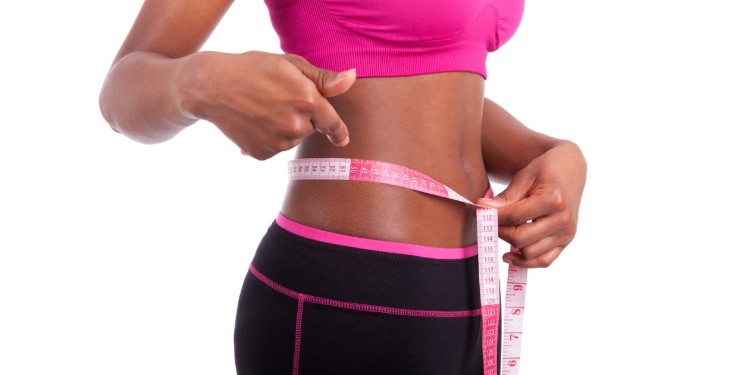One of the most compelling subjects in my health talk with clients is ‘how to snatch the waist.’ Because, who doesn’t want a snatched waist and flat tummy in this life, please?
I know that I do, and while I have had two kids, I believe that my waist can get as close to what it was before my uterus and abdomen stretched to accommodate babies. For some people, its not even about getting the flat before-baby belly back, we just want to stop looking like we are still carrying a 6month old pregnancy.
Then there’s also my ‘Nulligravida’ sisters – that is women who have never been pregnant yet have a tummy pouch that rains on their body-con parade. Ugh.
Ok, whatever your tummy reality is, I gatcha, so pull a seat.
First, a quick lesson
One way a lot of us measure our health is through the scale. ‘What do you weigh?’ is a conversation starter among many weight watchers. We give the scale more power than it needs to have, by weighing daily and all such terrible habits. Just stop it.
Now, while I am not an advocate of ‘let’s throw the scale away’, I am convinced of other means by which we can check our nutrition, fitness and health status.
I would zoom in one, which is waist circumference. I especially love this anthropometrical measure because not only is it easy to calculate, it is also, for the most part, accurate in its predictions.
All you need is a tape measure and your birthday suit. In other words, baby, get naked and start measuring.
How it works
When undressed, take the tape measure around your waist, in your belly button region and make sure the tape is as straight as possible. Take a deep breath, exhale then measure, after which you record the inches you see. You can do this yourself and do not hold the tape too tight.
Then benchmark your figure in inches against the table below which shows what healthy and unhealthy waist circumference range. It differs for males and females. I have shared both so you can share with the men in your life. Let’s harass them too haha.
| Risk level | Female (cm and inches) | Male (cm and inches) | |
| Normal | None | 64 – 80cm25 – 32inches | 78 – 94 cm31 – 37inches |
| Overweight | Elevated risk | 80 – 88cm32 – 35inches | 94-102cm37-40inches |
| Obese | High risk | >88cm>35inches | >102cm>40inches |
Why does waist circumference matter?
Because it is the best external measure of visceral fat. That is the fat around your abdominal area, and this is the most dangerous kind of fat, implicated in various cardiovascular diseases (CVDs) and diabetes.
And once you are at elevated or high risk, no matter what the scales or your BMI says, you should start to do something about it. The first place to start is lose weight by maintaining a healthy diet and working out.
The spot reduction myth
One of the biggest mistakes people make per belly fat is to try to ‘spot-reduce’ just that region. The try this by doing crunches and countless sit-ups. But that is very futile. Those workouts do not burn fat; they just tone your muscle. And to see that effect, you must have burned a good percentage of the fat off the muscle, so work on a general weight loss program, including cardio and strength training, and let it attack the places where fat is in excess in the body.
This measure also works for those who are slim but have a big tummy. Irrespective of how slim you are, if your waist circumference puts you at risk, then you must start to do something about losing visceral fat.
Finally
While fat in general is dangerous, comparatively, it is safer to carry your fat around your hips, bum, arms, legs, face and more than it is to carry it around the abdominal region, especially because of its proximity to the major organs of the body like your heart.
So, get that tape out, measure yourself and adjust as need be.
Let’s snatch that waist baby, and for better reason than a bikini this summer.
